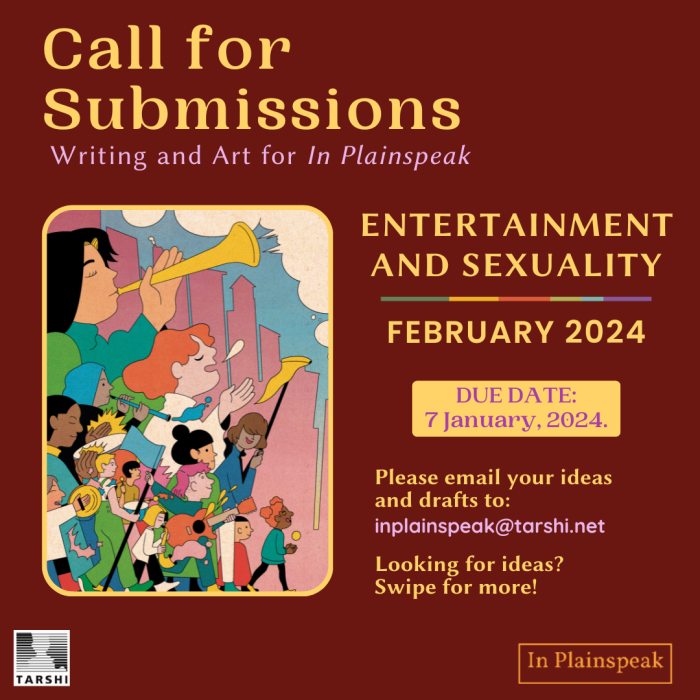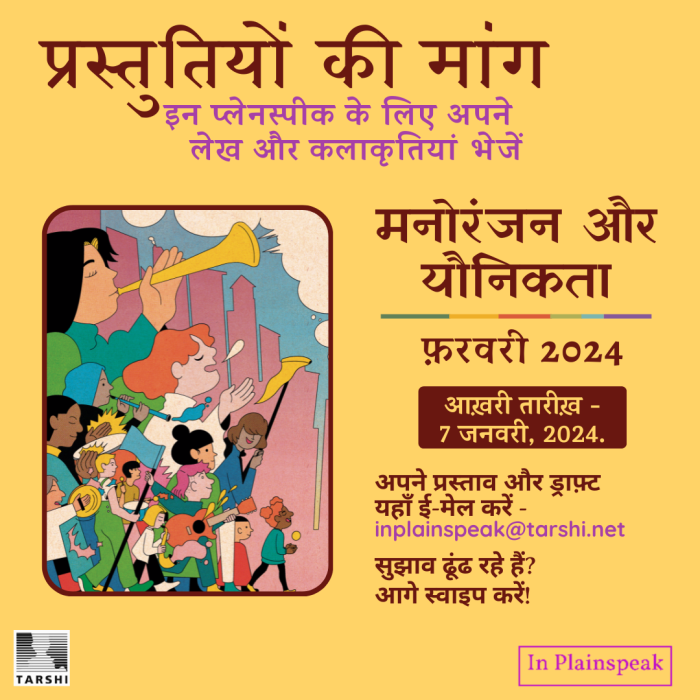
Our lives have come to be defined by texts, images, videos, voices and other data and metadata zipping through interconnected networks of computers and other devices. Digital spaces are now an extension of our physical, emotional, cultural and sociopolitical spaces. In these spaces, mediated through digital technologies, much of our lives, relationships and connections, fantasies, desires and intimacies, work and activism play out. These digital entanglements transcend bodies, time, geographical borders and boundaries, influencing – and perhaps fundamentally changing – the ways in which we understand, explore and express our sexuality. Yet, the liberatory and subversive potential of digital spaces is also increasingly threatened by ‘real-world’ inequalities, marginalisation, surveillance and violence.
Who, then, gets to inhabit digital spaces? In an informative interview with Shikha Aleya, Padmini Ray Murray talks about designing inclusive and safe digital spaces. Dwelling on who creates, inhabits and governs these spaces, Padmini points out that “What we lack are digital spaces and infrastructures that are informed by the needs of their end users, that prioritise safety, comfort, joy and care…”
Digital spaces, even as algorithms govern them, have opened new worlds for connecting and communicating. Firnita Taufick, in a collection of poems, writes about staying digitally connected while being physically apart and the joy, safety and intimacy that one can find in these online connections. Stepping briefly out into the IRL world, Arundhati Nath’s review of Amelia Abraham’s Queer Intentions highlights the need to “deconstruct the binaries that frame our lives.”
In the Hindi section, we have two translations. The first article by Neel explores how digital spaces have reshaped how we navigate touch, intimacy and pleasure, especially during the COVID-19 pandemic. As a part of our Navintam section, we have Andy Stephen Silveira’s reflections on how class influences our aesthetics and desires.
In our Video section, we bring to you a short film on Bert’s excitement at the possibility of finding his online match while on the subway. Also, check out this month’s TARSHI Corner for updates from the TARSHI team.
Our December issue delves further into the connections between digital spaces and sexuality. In the Issue in Focus, writing about selfies, sewing machines, and the ‘phygital’, Bishakha Datta explores what it means to navigate the politics of sexuality through discourse and practice while walking the thin line between pleasure and danger.
Reflecting on the “love affair between Big Tech and CSE”, Gunjan Sharma traces her journey as a Comprehensive Sexuality Trainer/Educator from the ‘Helpline era’ to the digital era, when educators are increasingly using hybrid models, digital spaces and tools. Siddharth Narrain dwells on his entanglements with dating apps and wonders if digital technologies can help alleviate modern loneliness. M.A. Dubbs, on the other hand, finds refuge and community in digital spaces where she can be her true self.
This month, we bring to you two Hindi translations. The first article by Bishakha Datta – supplementing the Issue in Focus – explores how loitering online is important for digital self-determination, especially for queer folx with disabilities. In the second article, Srishti Sarkar writes about how Google and social media platforms have been crucial to learning and unlearning about her sexuality as well as finding community.
In Plainspeak turns 10 this year! As we reach this milestone, we would like to extend our heartfelt gratitude to all our contributors and readers, whose support and engagement have made this journey possible and fulfilling. Thank you for helping us build a safe, inclusive and self-affirming digital space.
Before heading out, see this month’s TARSHI Corner for updates from our team.
Happy reading, and stay connected (digitally and IRL)! TTYL.

